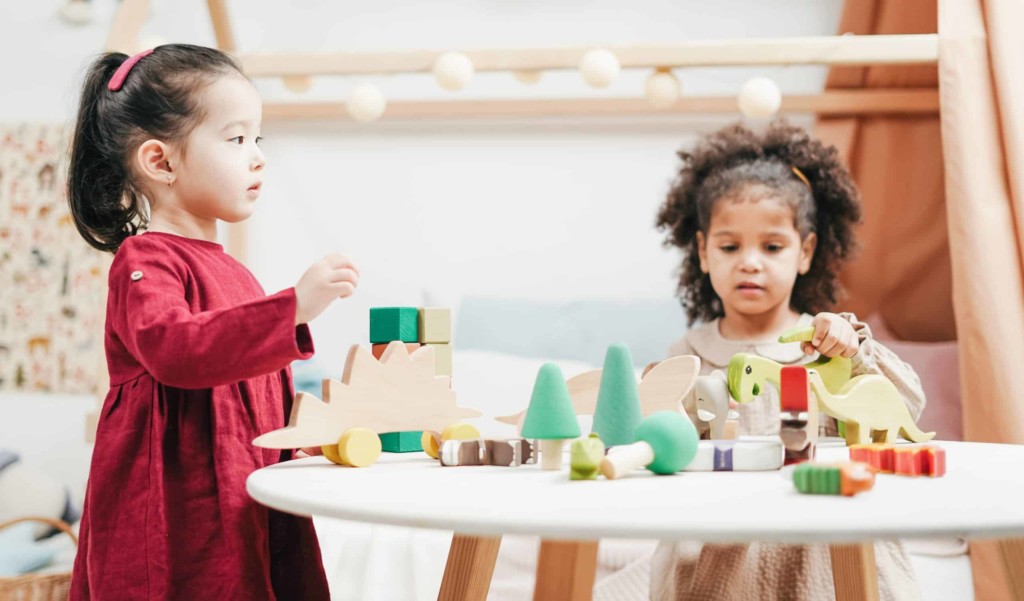Play, Play-Based Learning Important Now More Than Ever

As the pandemic stretches on, we have naturally heard of the many challenges related to distance learning. And when it comes to how to make learning and life better for our students, we typically hear about new tech applications, games, projects or even instructional approaches. And although those certainly have tremendous value, we may be ignoring one of the most impactful aspects of learning and wellness: PLAY.
Research-Based
Researchers contend that play, or play-based learning, are critical aspects of childhood development. And now, even more than ever, educators and others are coming together to promote the benefits of structured and intentional play. Neuroscientists have concluded that play-based learning positively affects the development of narrative language and acquisition of grammar, while also increasing children’s strength intellectually, physically, and socially-emotionally.
Technology Impact
In the fast-paced and tech-centric world, we live in, helping educators and parents recognize the importance of play is not only important but also critical to helping children reach their individual potential, according to Deb Lawrence, President of the International Play Association’s USA Branch.
Lawrence – who has spent over 35 years in the field of early care and education – says that even though educators and parents remember playing as young children, they have forgotten or are unaware of the real value of play in this technology-driven culture. “I’m really worried that today’s parents may think that our smartphones, tablets, and computers can replace the active play vital to our childhood, learning, and wellness,” said Lawrence.
Overscheduled
Beyond technology, Lawrence suggests that another barrier to children getting playtime is that we, as a culture, tend to overschedule children with too many extracurricular activities.
“Going from one adult structured activity, like soccer practice or dance class, to another adult structured activity is not play,” said Lawrence. “Getting back to what play is and why it is important can help educators and parents recognize that play is the purest form of learning.”
Lawrence says that age-appropriate, structured, and intentional play is active, hands-on, nature, and toy-oriented, and also includes the important aspect of allowing children to choose what they want to do without adult interference. “This is where learning occurs,” said Lawrence. “This type of play is not only fun, but also challenging, imaginative, and developmental.”
Play and Wellness
One of the big takeaways, according to Lawrence and others, is the fact that we need to explicitly create opportunities for young people to use less technology and be less absorbed in screen time.
Playmakers Institute’s Dr. Angie Nastovska says that unplugging and connecting with life have become harder than ever. With the current dominance of distance learning, she believes we are slowly impacting the quality of play and ultimately our kids’ development.
“The same parents that often took a strong stance against the negative effects of technology are now having to guide their children through online learning and screen time,” said Nastovska.
Nastovska suggests that play is the answer to the negative effects of isolation and fatigue from distance learning, as well as the already impactful effects of technology. “The global pandemic just accelerated our challenges and the future’s face of uncertainty,” said Nastovska. “This should serve as a reminder about what our kids need and how learning is much more than just a school-based endeavor.”
Other educators are also indicating that play is more crucial than ever. Lisa Latimer, a school director and play-based learning advocate with IPA USA, believes that we need to educate teachers and parents together on this phenomenon. “People need to look at play through a different lens and change how they think about play. It is not frivolous,” said Latimer.
Skills
However, Latimer sees an urgency here that extends beyond the pandemic and also relates to skills that young people need going forward. “To thrive in today’s fast-changing world, people of all ages must learn to think and act creatively — and the best way to do that is by focusing more on imagining, creating, playing, sharing, and reflecting, just as children do through play,” said Latimer.
But the pandemic also weighs on Latimer and she reiterates the importance now of how we help our children navigate through uncertain times. She believes that play serves as a necessary coping mechanism for anxiety and provides a buffer for stress, meltdowns, and negative feelings.
“Using play and a playful spirit as a means to let children work with changes and challenges as they occur helps children to make sense of the world around them,” said Latimer. “Now more than ever, play is crucial in the lives of our children.”
Final Word
Both for our current distance learning environments, as well as the post-pandemic lives we hope to return to, Lawrence has some very explicit advice for parents.
“Limit extracurricular activities to one activity per week, so children have plenty of time to play outside and to direct their own play,” said Lawrence. “Play with your child when they ask you to play, but let them lead the play.”
A Few Samples of Potential Play-Based Learning Activities:
- Get Your Kids in the Garden
- How to Create a Backyard River System
- How to Set Up a Compass Treasure Hunt
- Campfire Cooking
- Naturally Powered Toys
- Eartheasy Guide to Outdoor Education
For more, see:
- Successful Play-Based Learning in Virtual Environments
- Why Children Who Play Succeed
- Power of Play: Applied Knowledge, Engaged Learning
Stay in-the-know with innovations in learning by signing up for the weekly Smart Update.







0 Comments
Leave a Comment
Your email address will not be published. All fields are required.